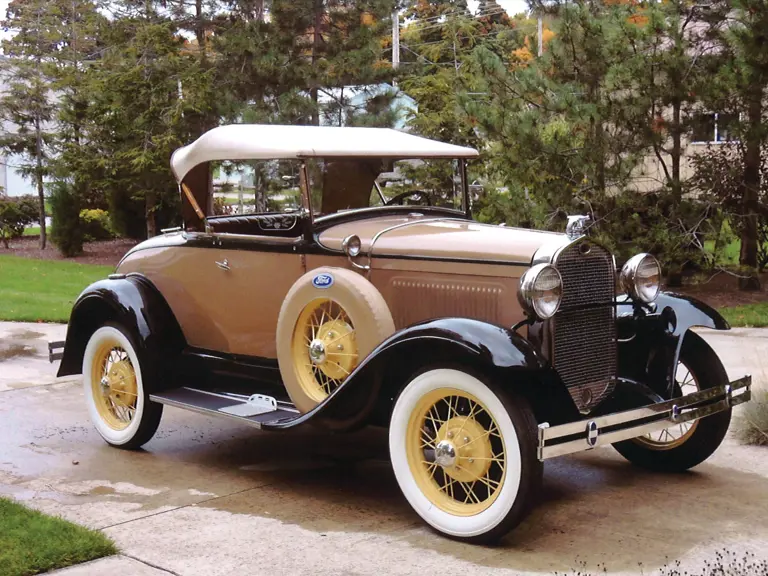 | Fort Lauderdale, Florida
| Fort Lauderdale, Florida
The cost of the second generation Model A, produced 24 years after the original was priced from $385 through $570. The car was powered by an L-head four-cylinder engine with 200.5 cubic inches in displacement. A three-speed sliding gear transmission with one reverse speed was also utilized. Top speed was achieved at a little over 60 miles per hour with the average fuel mileage being rather exceptional. Just like the Model T, the Model A was available in multiple configurations such as the top-of-the-line Four-Door in either two or three window, Victoria, Station Wagon, Pickup, Town Car, Convertible Cabriolet, Phaeton, Business Coupe, Sport Coupe, Roadster Coupe and Coupe.
Ford entered 1930 by giving its still popular Model A more in the way of major changes than it had the previous year. Though basic styling remained the same, there were lower and wider fenders, a higher hood line, and stainless steel instead of nickel plate on the radiator shell and headlights shells and rims. Ford also switched to balloon tires and decreased wheel diameter from 21- to 19-inches. It took factory assembly about a year to hit full stride. Once it did, Ford pulled ahead of Chevrolet in production races. Its output of 1,155,162 units in calendar year 1930 would be the best for the entire decade.
This tan body with black fenders and belt molding two-tone Model A has been frame-off restored and is richly presented with straw-toned wire wheels, tan interior and tan soft-top. Very well accessorized; this roadster features dual cowllights, dual sidemounts with canvas covers, Flying Quail radiator mascot, etched windwings, wide whitewall tires, grilleguard, trunk rack, rumbleseat, rear bumperettes and running board step plates. This Model A has a very nice presentation, and it is surely one of the better equipped Model A roadsters one could find.





